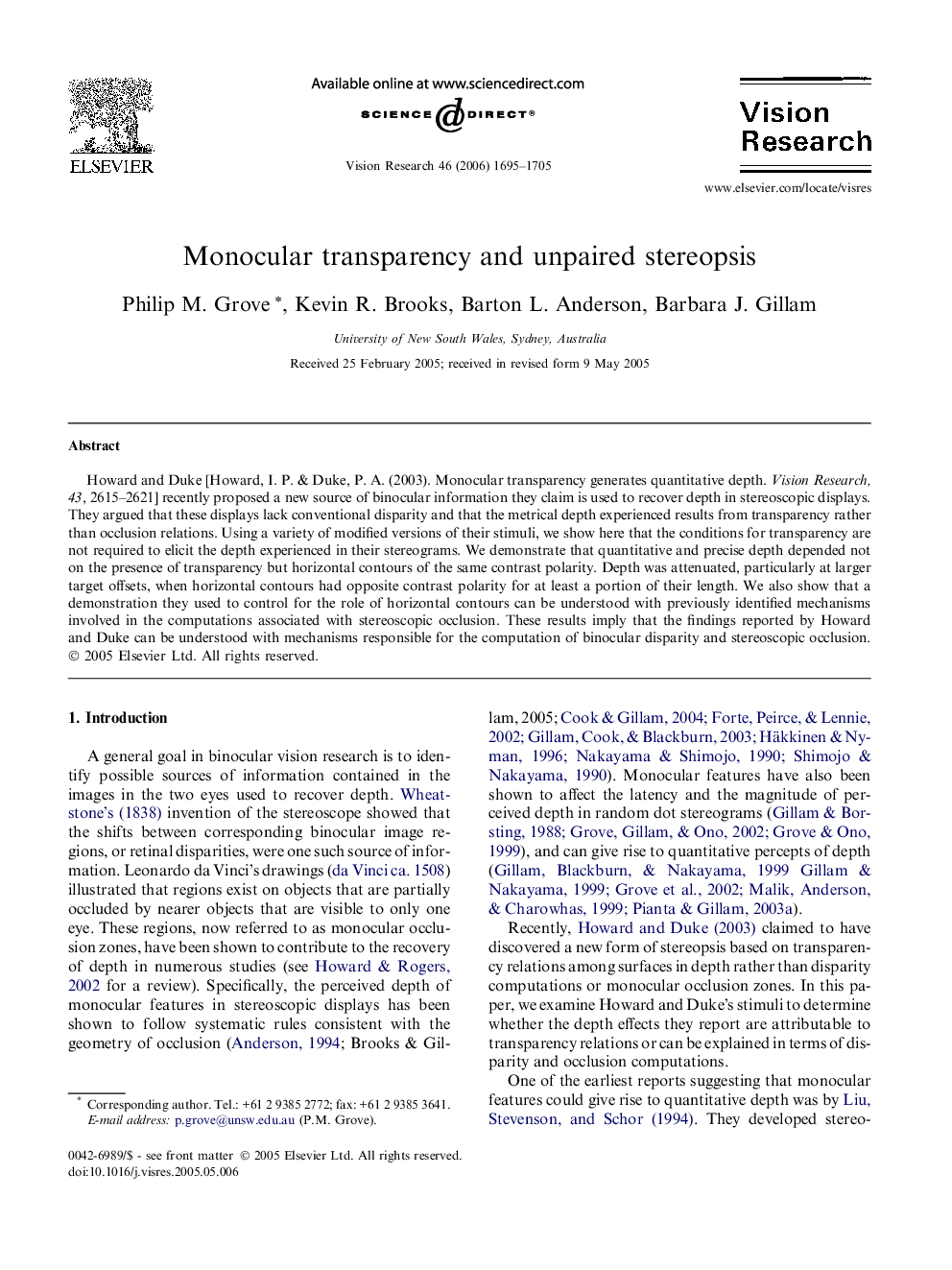| Article ID | Journal | Published Year | Pages | File Type |
|---|---|---|---|---|
| 4036748 | Vision Research | 2006 | 11 Pages |
Howard and Duke [Howard, I. P. & Duke, P. A. (2003). Monocular transparency generates quantitative depth. Vision Research, 43, 2615–2621] recently proposed a new source of binocular information they claim is used to recover depth in stereoscopic displays. They argued that these displays lack conventional disparity and that the metrical depth experienced results from transparency rather than occlusion relations. Using a variety of modified versions of their stimuli, we show here that the conditions for transparency are not required to elicit the depth experienced in their stereograms. We demonstrate that quantitative and precise depth depended not on the presence of transparency but horizontal contours of the same contrast polarity. Depth was attenuated, particularly at larger target offsets, when horizontal contours had opposite contrast polarity for at least a portion of their length. We also show that a demonstration they used to control for the role of horizontal contours can be understood with previously identified mechanisms involved in the computations associated with stereoscopic occlusion. These results imply that the findings reported by Howard and Duke can be understood with mechanisms responsible for the computation of binocular disparity and stereoscopic occlusion.
